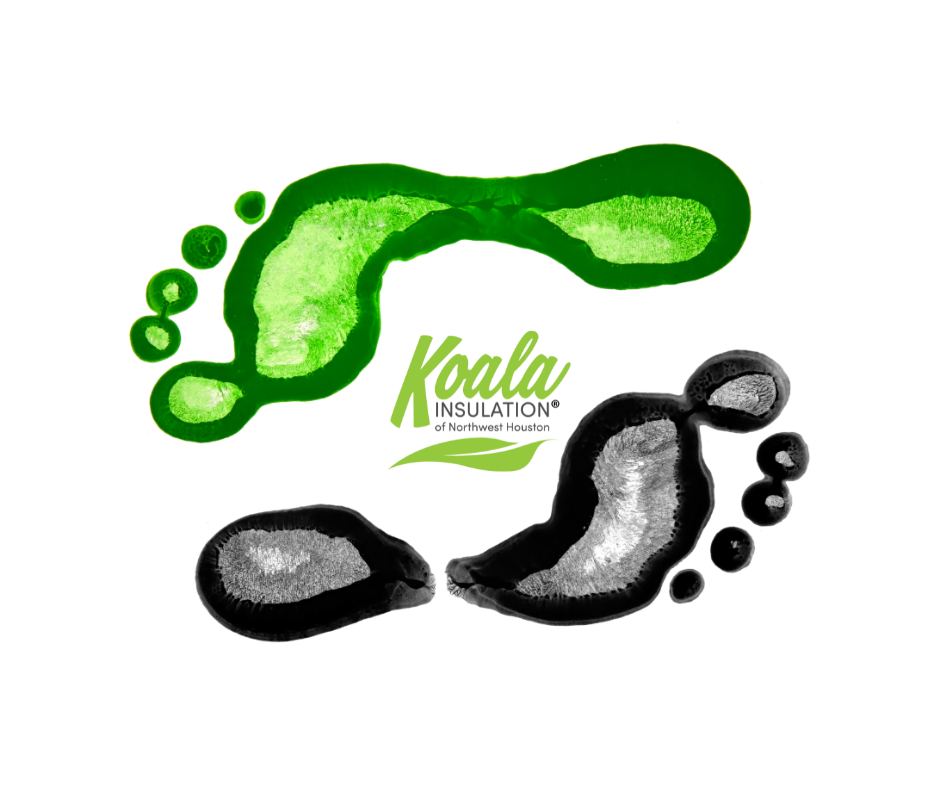
How Insulation Can Reduce Your Carbon Footprint
What is a carbon footprint?
A carbon footprint is the total amount of greenhouse gas emissions from an individual or a group’s actions. You can calculate your annual carbon footprint in many carbon footprint calculators online.
We can start limiting our carbon footprint by reducing our energy consumption of heating/cooling at home and in the workplace.
Increasing energy efficiency
To reduce our carbon footprint is through the use of less energy. Energy efficiency is achieved when we do the same task or have the same output but with less waste. For example, LED bulbs use 75% less energy than incandescent bulbs while providing the same light.
There are many other appliances that save energy. Insulation is a huge part of your home or building’s energy efficiency.
How the right insulation can reduce the size of your carbon footprint
- Insulation works simply: It prevents heat loss and gain
Insulation minimizes heat loss/gain in a building from conduction, convection, or radiation of heat. It serves as a barrier between indoors and outdoors (two places varying in temperatures)
Insulation is mainly done on the roof, attic, windows, doors, walls where heat can easily escape.
- Saves energy and money
Heat from the sun transfers to underinsulated attics and spreads throughout the floor below it. If your attic is not insulated or there are air leaks in your house, heat transfers constantly to your living space. This means your A/C would have to work harder to keep your house or building cool. Conversely, during cold months, your heater would have to work harder if cool air keeps coming in.
This would result in higher electricity/gas bills and shorter lifespan of heating/cooling systems.
With proper insulation, your heating/cooling system warms/cools up your home relatively faster-- and it can save you an average of 11% of your energy consumption.
What is the right insulation?
The right insulation depends on many factors like location, moisture content, R-values, thickness and structural needs of a building.
If you want to take a step further in reducing carbon footprint for insulation, here are insulation materials made from recycled materials:
- Fiberglass - also called glass wool, fiberglass is made from up to 40% recycled scrap glass.
- Cellulose - depending on the manufacturer, the recycled content can be up to 85% recycled paper making it a sustainable material. Cellulose lessens emission of methane if the recycled paper went to the landfill instead.
Denim is another type of cellulose insulation made from scraps of denim from manufacturing facilities. This insulation can be Class A fire resistant if treated with borate.
- Mineral wool insulation - There are two kinds of mineral wool: rock wool which can be composed of 10-15% recycled blast furnace slag and slag wool comprising 70-75% recycled blast furnace slag.
According to North American Insulation Manufacturers Association NAIMA, almost 11 billion pounds of recycled blast furnace slag were used as mineral wool insulation in the past 10 years.
If we want our future generations to live comfortably, let’s do our part in saving energy. Aside from using energy saving appliances, insulating our homes and workplaces will go a long way.
If you want to know whether your home or business is properly insulated, book for a FREE evaluation with one of our consultants now!
Koala Insulation of Northwest Houston
Delivering Efficiency. Improving Comfort.
Koala Insulation of Northwest Houston is an insulation contractor providing high-quality insulation services to homeowners, contractors, and property owners. We work with new construction, retrofit applications, and properties affected by natural disasters or that have suffered significant damage.
Ready to book your free insulation evaluation?
We have 3 convienant ways for you to get in touch
We Provide Insulation Services to the Following Northwest Houston Areas
Houston, Spring Branch, Jersey Village, Willow Brook, Copperfield, Cypress, Mason Park, and Cinco Ranch
Counties Served
Harris County, Waller County, & Fort Bend County
Zip Code
77040, 77041, 77080, 77043, 77055, 77070, 77069, 77066, 77065, 77449, 77450, 77433, 77429, 77095, 77084, 77064
